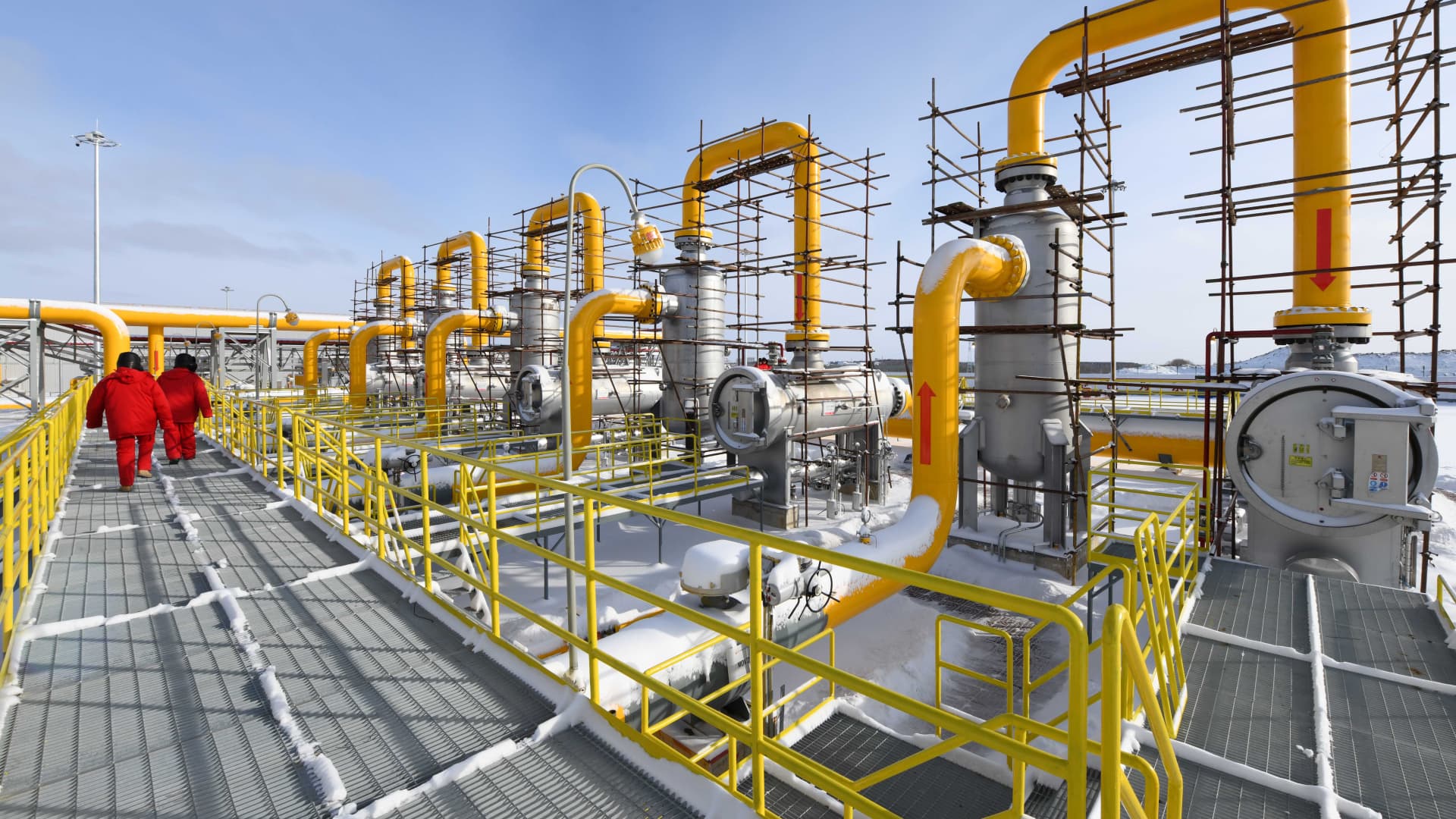This map shows the massive gas pipeline that Russia and China are building
China and Russia are in the final stages of building a pipeline that can send gas from Siberia to Shanghai.

Construction on the China-Russia eastern natural gas pipeline project has moved far beyond provinces on the border, and extended to the eastern Chinese province of Jiangsu, pictured here on March 12, 2022.
Future Publishing | Future Publishing | Getty Images
BEIJING — China and Russia are in the final stages of building the first pipeline that can send gas from Siberia to Shanghai.
"Power of Siberia" — as the portion located in Russia is called — began delivering natural gas to northern China in December 2019, according to Chinese state media.
In China, the pipeline runs down the eastern side of the country, past the capital city of Beijing and down to Shanghai. The middle phase started operations in December 2020, and the final southern section is set to begin gas deliveries in 2025, state media said.
State-owned energy companies, Russia's Gazprom and China National Petroleum Corp., have been building the pipeline for about eight years.
The China-Russia pipeline comes as Moscow faces the threat of losing natural gas purchases from the European Union, a big customer that aims to cut two-thirds of its Russian gas imports in the wake of the Ukraine war.
China has been looking to diversify its energy sources. Beijing has refused to condemn Moscow for its unprovoked invasion of Ukraine in late February.
The scale of the China-Russia gas pipeline indicates it is just one of many energy options for Beijing.
Although Russia has reportedly invested $55 billion into its pipeline deal with China, natural gas imports through the pipeline have only totaled $3.81 billion since December 2019, according to China customs data as of June, accessed through Wind Information.
The pace of Chinese purchases picked up in the first half of this year — nearly tripling from a year ago to $1.66 billion, the data showed.
But China's gas imports from Turkmenistan during that time were far higher at $4.52 billion, up 52% from a year ago, the data showed.
Natural gas remains a tiny fraction of China's energy imports, which are mostly of crude oil.

 Troov
Troov 






























